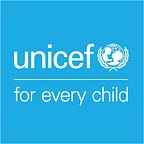Still haunted by nightmares
UNICEF-supported Child-Friendly Spaces provide a safe and protective environment, helping children cope in Bujumbura
Child-Friendly Spaces are providing a safe environment for children in Burundi — who make up half of the country’s population, and bear the brunt of the current political crisis. Since the onset of the crisis in April 2015, more than 25 children were killed and unknown numbers of others injured, while more are struggling to cope after witnessing violent protests and gunfire.
Gloria [NAME CHANGED], 13, does her homework in Bujumbura. She is terrified by the sound of gunfire and, after seeing a dead body last July, has recurrent nightmares.
“There was so much blood,” she says. “I had this fear in my heart […] I felt that it could have been me.”
Gloria ran straight home and found her mother. For days she was too afraid to leave the house and return to school.
“During the night, the images come back to me,” she explains. “There were protests where people were killed. There were guns everywhere. It was frightening.”
Gloria is just one of many children traumatized as a result of the violence. A 13 year old girl Gloria knew was raped.
“I know some children who had their house burned down and they lost members of their family,” says Gloria. “I know another child whose father was killed.”
Before the crisis, Gloria’s father says she was doing very well at school but as the violence escalated she started to fare badly in class. Many of her friends have fled to the Democratic Republic of the Congo or to other provinces in Burundi.
“I really miss them,” she says.
Gloria’s teacher referred her to the Kamesa Child-Friendly Space, a safe place where children can play and receive psychological support, and 1 of 37 centres established by UNICEF in neighbourhoods affected by violence. One in four children visiting these centres shows signs of trauma.
When Gloria first arrived at the child-friendly space, she did not participate at all in games. She was isolated. But, with time and counselling, she started to feel less afraid and started to participate. A pile of shoes belonging to children playing, at the Kamesa Child-Friendly Space.
Dieudonné Nshimiki, a support worker, leads a game at the child-friendly space. He looks out for key signs in children — including isolating themselves, having an empty gaze, or showing fear in their body language — and refers them to trained psychologists.
“There are children so affected …” psychologist Etienne Rukundo says “… they can’t sleep in red sheets because the colour reminds them of blood.”
UNICEF has worked to strengthen monitoring and reporting on grave violations against children. At the space, children play.
Gloria’s father says his daughter’s school marks dropped as the crisis escalated and she became increasingly anxious. However, attending the child-friendly space and receiving counselling has helped to turn things around.
“The games we play…really help me,” says Gloria.
Gloria is coming to terms with her experience and is not as scared as before. Her bad dreams continue, but she is determined to move forward and help other children.
“In the future, I want all the children in my country to live in peace,” she says.
